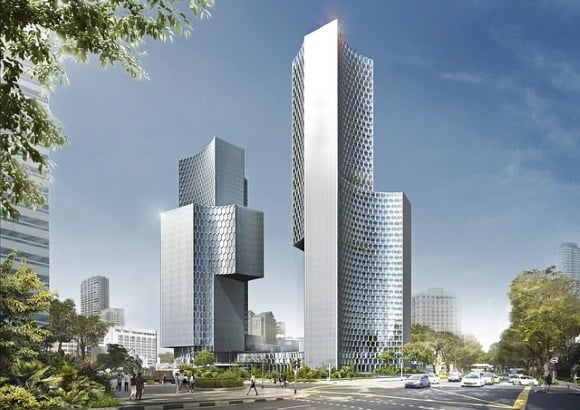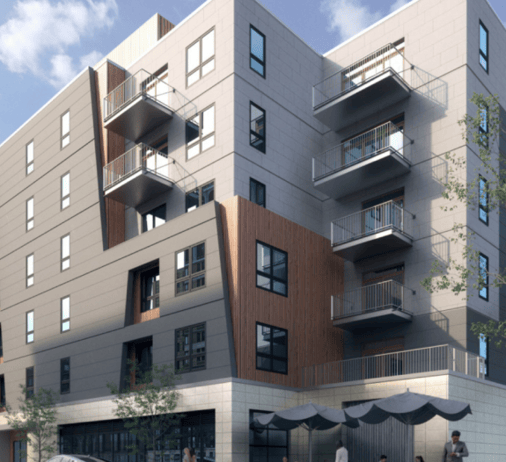4 Trends That Mold the Future of Architecture
{This is a guest post.}
When you’re watching an older film that was set in the future, it’s easy to laugh about what they thought the landscape of the world would look like in present day. The exaggerated caricature of space-age silver buildings craning to break the atmosphere and commuters leisurely propelling themselves through open air space in hovercrafts proved to be a tad bit farfetched so far. The foreseeable future contains nothing of the sort, as architecture shapes itself around the needs of people who utilize it and the concerns of the individuals who contract its construction. A realistic look at the future of modern architecture shows a changing standard that isn’t quite based in science fiction, but is exciting nonetheless.
Going Green
Architects are taking environmental concerns to heart when designing the buildings of the future. This involves designing buildings in a way that promotes energy efficiency, such as placing windows to allow maximum levels of natural light while balancing the compromise of how the heat from that light will impact cooling costs.
Increasing environmental friendliness also means that architects are more mindful of the desire for solar energy, developing ways to incorporate solar panel systems that are more pleasing to the eye. Many architects are envisioning structures made with more sustainable materials and designed to reduce the potential for material waste, for this, each day they learn more about solar panel companies!
Simplifying
While ornate and complex buildings are undoubtedly breathtaking to look at, don’t expect to see these structures to be erected as often as they have in the past. The decorative and antiquated beauty of Chinese architecture’s blatantly recognizable features to be less prevalent in the future as architects begin to choose function over style. This also means a decline in so-called “starchitecture”, the iconization of a particular building through the use of novelty artistic tactics to create some memorable facades through mere decoration. A function over form model is taking precedence over previous art models to help accommodate with the rapid urbanization of many areas, where a greater amount of buildings need to be constructed within a more compact space.
Smooth Interiors
Especially in large commercial buildings, you’ll find that certain interior spaces are sequestered from others. This has a large impact on internal foot traffic within a workplace. Esteemed architects aim to reduce this divide by creating more intersections which promote a more efficient flow of people throughout an environment. This expands the possibilities of what can be done within a professional space and will largely affect what can be done with the layout of offices and meeting spaces, all while increasing an employee’s ability to get from one task to the next. Again, too much moisture can cause mold growth. After the air quality testing has been completed in your home and business and it has been confirmed that mold is present, it is pertinent to begin carrying out the mold removal process. A1 Water & Mold Removal MA – Residential Cleanup company can provide you with an excellent service. We offer inspection, mold removal, and restoration services to deal with your problems quickly and conveniently. This name catches our attention, don’t you think? Wet and forget! But what to be made wet and forget. It is none other than a moss, mold & mildew stain remover from Wet and Forget company. This company comes with a range of Pressure Coach cleaning products.
Open Door Designing
Instead of architects taking on the brunt of designing decisions, more collaboration has begun to transpire. Architecture is not as big of a mystery as it used to be to many who are contracting builds. Because of this, architects are incorporating more input from professionals in similar fields to create more cohesive designs with greater possibilities. People have better ideas about what they need in a building, and proprietors and designers alike are working more closely with architects to apply their ideas to the final outcome.
At the end of the day, architecture changes with popular taste. The future of architecture will be more mindful of its effects on the environment and how we impact the earth. We’ll lose the bells and whistles and concentrate on creating an effective building instead of a decorative building. Most importantly, the ability to customize our buildings will allow us to have everything we’ve ever dreamed of without having to modify our desires to fit someone else’s vision.
Author Bio: Torri Myler is a team member at http://www.bankopening.co.uk/ – a UK bank opening hours and closing times directory. She is keen on architecture and interior design tracking new trends and possibilities in both areas.


